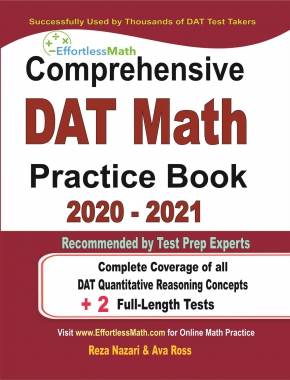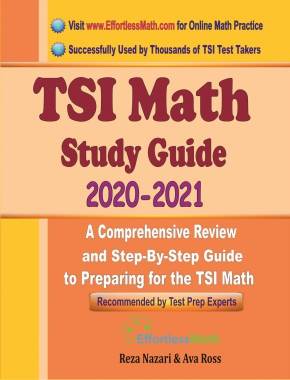The Most Complete Guide to Numerical Methods in Differential Equations
Numerical methods in differential equations are techniques used to approximate the solutions of differential equations when an exact, analytical solution is difficult or impossible to obtain. These methods are essential for solving real-world problems, such as modeling physical systems, where finding exact solutions may be complex or impractical.
[include_netrun_products_block from-products="product/6-south-carolina-sc-ready-grade-3-math-practice-tests/" product-list-class="bundle-products float-left" product-item-class="float-left" product-item-image-container-class="p-0 float-left" product-item-image-container-size="col-2" product-item-image-container-custom-style="" product-item-container-size="" product-item-add-to-cart-class="btn-accent btn-purchase-ajax" product-item-button-custom-url="{{url}}/?ajax-add-to-cart={{id}}" product-item-button-custom-url-if-not-salable="{{productUrl}} product-item-container-class="" product-item-element-order="image,title,purchase,price" product-item-title-size="" product-item-title-wrapper-size="col-10" product-item-title-tag="h3" product-item-title-class="mt-0" product-item-title-wrapper-class="float-left pr-0" product-item-price-size="" product-item-purchase-size="" product-item-purchase-wrapper-size="" product-item-price-wrapper-class="pr-0 float-left" product-item-price-wrapper-size="col-10" product-item-read-more-text="" product-item-add-to-cart-text="" product-item-add-to-cart-custom-attribute="title='Purchase this book with single click'" product-item-thumbnail-size="290-380" show-details="false" show-excerpt="false" paginate="false" lazy-load="true"] [include_netrun_products_block from-products="product/6-south-carolina-sc-ready-grade-3-math-practice-tests/" product-list-class="bundle-products float-left" product-item-class="float-left" product-item-image-container-class="p-0 float-left" product-item-image-container-size="col-2" product-item-image-container-custom-style="" product-item-container-size="" product-item-add-to-cart-class="btn-accent btn-purchase-ajax" product-item-button-custom-url="{{url}}/?ajax-add-to-cart={{id}}" product-item-button-custom-url-if-not-salable="{{productUrl}} product-item-container-class="" product-item-element-order="image,title,purchase,price" product-item-title-size="" product-item-title-wrapper-size="col-10" product-item-title-tag="h3" product-item-title-class="mt-0" product-item-title-wrapper-class="float-left pr-0" product-item-price-size="" product-item-purchase-size="" product-item-purchase-wrapper-size="" product-item-price-wrapper-class="pr-0 float-left" product-item-price-wrapper-size="col-10" product-item-read-more-text="" product-item-add-to-cart-text="" product-item-add-to-cart-custom-attribute="title='Purchase this book with single click'" product-item-thumbnail-size="290-380" show-details="false" show-excerpt="false" paginate="false" lazy-load="true"]

Here’s a breakdown of the key concepts and common numerical methods used for solving differential equations:
Why Use Numerical Methods?
- Complexity of Analytical Solutions: Many differential equations cannot be solved using standard analytical methods like separation of variables or integrating factors.
- Nonlinear Problems: Nonlinear differential equations often lack closed-form solutions, requiring numerical methods for approximations.
- Real-world Applications: In fields like physics, engineering, and biology, numerical methods are often the only way to solve differential equations that model complex systems.
Common Numerical Methods for Differential Equations
- Euler’s Method:
- Basic Idea: Euler’s method approximates the solution of a first-order ordinary differential equation (ODE) by taking small steps along the curve defined by the derivative.
- Formula: If \( y'(x) = f(x, y) \), then the next point \( y_{n+1} \) is given by:
\(
y_{n+1} = y_n + h \cdot f(x_n, y_n)
\)
where \( h \) is the step size, \( (x_n, y_n) \) is the current point, and \( f(x_n, y_n) \) is the slope of the function at that point. - Pros: Simple and easy to implement.
- Cons: Low accuracy unless the step size \( h \) is very small.
- Improved Euler Method (Heun’s Method):
- Basic Idea: This is a refinement of Euler’s method, where an average of the slope at the beginning and the end of the interval is used to improve accuracy.
- Formula:
\(
y_{n+1} = y_n + \frac{h}{2} \left[ f(x_n, y_n) + f(x_{n+1}, y_{n+1}^*) \right] \)
where \( y_{n+1}^* = y_n + h \cdot f(x_n, y_n) \) is an estimate. - Pros: More accurate than Euler’s method.
- Runge-Kutta Methods:
- Basic Idea: The Runge-Kutta family of methods improves accuracy by considering the slope at several points within the interval. The most commonly used version is the Fourth-Order Runge-Kutta Method \(RK4\).
- Formula (RK4): The next point \( y_{n+1} \) is calculated using:
\(
y_{n+1} = y_n + \frac{h}{6}(k_1 + 2k_2 + 2k_3 + k_4)
\)
where:
\[
k_1 = f(x_n, y_n)
\]
\[
k_2 = f\left(x_n + \frac{h}{2}, y_n + \frac{h}{2} k_1\right)
\]
\[
k_3 = f\left(x_n + \frac{h}{2}, y_n + \frac{h}{2} k_2\right)
\]
\[
k_4 = f(x_n + h, y_n + h k_3)
\] - Pros: Much more accurate than Euler’s method with a relatively small number of steps.
- Cons: More computationally intensive than Euler’s method.
- Multistep Methods (Adams-Bashforth and Adams-Moulton Methods):
- Basic Idea: These methods use information from previous steps to compute the next point, reducing the number of evaluations needed per step.
- Adams-Bashforth: Explicit method, where the next point is calculated based on the previous points.
- Adams-Moulton: Implicit method, where an equation must be solved to get the next point.
- Pros: Can be more efficient for problems requiring long intervals or many steps.
- Cons: Requires starting values from methods like Euler’s or \(RK4\).
- Finite Difference Method (for Partial Differential Equations, PDEs):
- Basic Idea: This method approximates derivatives by using finite differences. The domain is discretized into a grid, and the differential equation is replaced with a difference equation on this grid.
- Example: For the second derivative in space, \( \frac{d^2 u}{dx^2} \), the finite difference approximation is:
\[
\frac{d^2 u}{dx^2} \approx \frac{u_{i+1} – 2u_i + u_{i-1}}{h^2}
\]
where \( u_i \) is the value of the function at grid point \( i \) and \( h \) is the grid spacing. - Pros: Good for approximating solutions to PDEs in fields like heat transfer, fluid dynamics, and electromagnetics.
- Cons: May require small grid spacing for high accuracy, leading to large computational costs.
- Finite Element Method (FEM):
- Basic Idea: The domain is divided into smaller subdomains (elements), and a solution is approximated as a combination of basis functions over these elements. FEM is especially powerful for solving complex PDEs on irregular geometries.
- Pros: High flexibility and accuracy for complex boundary conditions and irregular shapes.
- Cons: Can be computationally expensive and complex to implement.
Types of Differential Equations Solved by Numerical Methods
- Ordinary Differential Equations (ODEs):
- Single-variable functions, such as \( \frac{dy}{dx} = f(x, y) \), where numerical methods like Euler’s or Runge-Kutta are commonly used.
- Partial Differential Equations (PDEs):
- Multivariable equations, such as \( \frac{\partial u}{\partial t} = \alpha \frac{\partial^2 u}{\partial x^2} \) (the heat equation). Methods like finite difference, finite element, and finite volume methods are used.
Error and Stability Considerations
- Step Size: A smaller step size generally improves accuracy but increases the number of calculations. Methods like adaptive step-size control can adjust the step size dynamically based on the error.
- Stability: Certain numerical methods may be unstable for stiff differential equations (equations where solutions can change very rapidly), leading to incorrect results unless specific methods are used (e.g., implicit methods or specialized stiff solvers).
Applications of Numerical Methods in Differential Equations
- Physics: Modeling planetary motion, electrical circuits, and fluid dynamics.
- Biology: Modeling population dynamics, disease spread, and biochemical reactions.
- Engineering: Heat transfer, structural analysis, and control systems.
- Economics: Modeling economic growth, market equilibrium, and optimization problems.
Numerical methods for differential equations provide powerful tools to approximate solutions for complex systems that cannot be solved analytically. By choosing the appropriate method based on the problem’s requirements (accuracy, computational cost, stability), numerical techniques enable us to simulate and solve real-world problems efficiently.
Frequently Asked Questions
How do you find the slope of a line?
To find the slope of a line, which is a measure of how steep the line is, you need two points on that line. Each point has coordinates (x, y). The slope formula is \( m = \frac{y2 – y1}{x2 – x1} \), where \( (x1, y1) \) and \( (x2, y2) \) are the coordinates of these two points. This calculation is a fundamental concept in algebra and is essential for analyzing trends, which can be applied in more complex mathematical modeling like numerical methods in differential equations used for approximating solutions when exact answers aren’t feasible. For more on the basics of slopes and other algebra fundamentals, you might find our resources on Algebra topics particularly useful.
What is the difference between an equation and an expression?
In mathematics, an equation is a statement that two expressions are equal, containing an equal sign (=), such as \( x + 2 = 5 \). It typically requires finding values that satisfy the equality. On the other hand, an expression is a combination of numbers, variables, and operations (like addition or multiplication) that represents a value, such as \( x + 2 \), but does not include an equal sign. Understanding the distinction is crucial, especially in fields like numerical methods in differential equations, where equations must be solved or approximated using various techniques. Such methods often transform complex differential equations, which describe physical phenomena, into simpler expressions that can be computed. Although there are no exact matches for related EffortlessMath.com pages in this context, further reading on foundational math concepts can always enhance understanding and application in more advanced topics like differential equations.
What is the difference between area and volume?
Area and volume are fundamental concepts in mathematics used to measure space, though they apply to different dimensions. Area refers to the amount of space covered by a two-dimensional shape, such as a square or a circle, and is measured in square units (e.g., square meters). On the other hand, volume measures the space that a three-dimensional object occupies, like a cube or a sphere, and it is measured in cubic units (e.g., cubic meters). Understanding these concepts is crucial, especially when using numerical methods in differential equations to solve real-world problems involving shapes and spaces in various dimensions.
Related to This Article
More math articles
- Professions related to mathematics
- Estimating Sums
- Unfolding Shapes: How to Identify the Nets of Prisms and Pyramids
- How to Use Parallelogram Rule for Vector Addition and Subtraction
- Top 10 Tips to Overcome ACCUPLACER Math Anxiety
- How to Study for a Math Test in 7 Easy Steps
- How is the ACT Test Scored?
- Full-Length GRE Math Practice Test-Answers and Explanations
- Algebra Puzzle – Challenge 52
- How to Factor by GCF?
























What people say about "The Most Complete Guide to Numerical Methods in Differential Equations - Effortless Math: We Help Students Learn to LOVE Mathematics"?
No one replied yet.